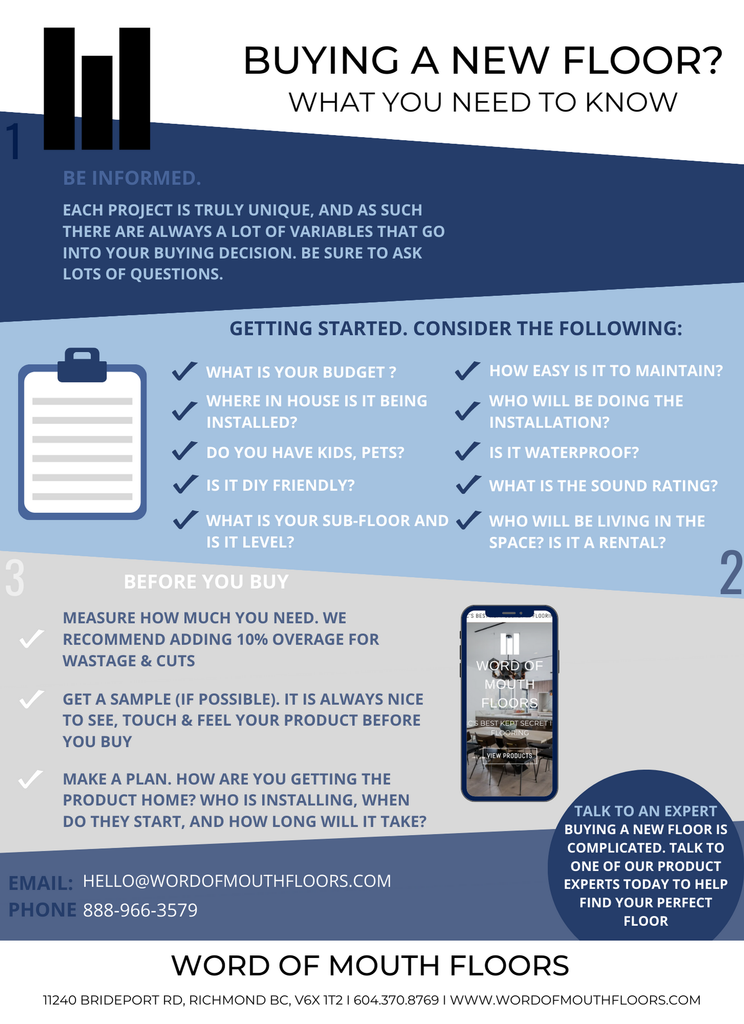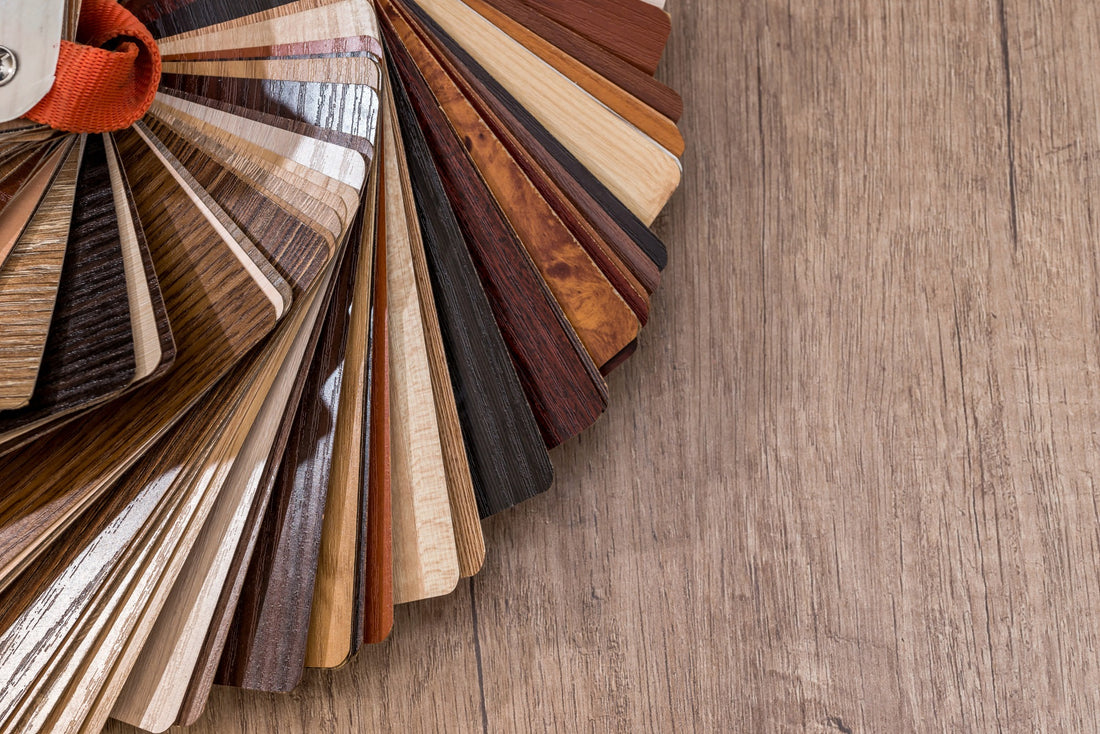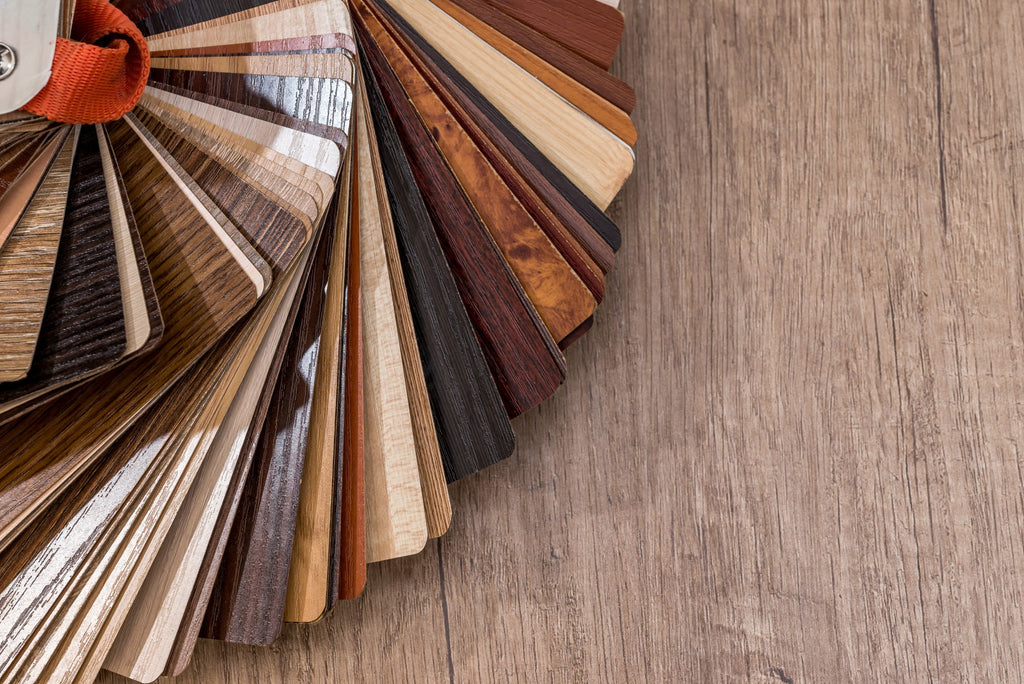If you're planning to buy a new floor, there are necessary preparations you need to do so that everything will go smoothly. When you prepare properly before buying a new floor, you will set up your installation crew for success and ensure that your new flooring looks incredible.
Find out what steps you should take to prepare your home before buying a new floor.

1. Be Informed Before Buying A New Floor
Take the time to research and look around for some trendy, durable, modern flooring for sale that will complement your style and budget if you have decided to remodel your home. Considering that not all floorings are made from the same materials, the cost will differ accordingly. Although there are a variety of flooring options available, not all of them will meet your needs.
There are a number of categories to choose from, such as porcelain, ceramic, natural stone, laminate flooring, vinyl flooring, hardwood flooring and so much more. Try to work with the space you have in your home while keeping your style in mind.
Each project is truly unique, and as such there are always a lot of variables that go into your buying decision. Be sure to ask lots of questions before buying a new floor.
2. Getting Started
Consider the following before buying a new floor:

What is your budget?
Even though it may seem expensive to install new flooring in your home, you can save hundreds of dollars if you do your homework and plan correctly,
Although you may have a general idea of what you are looking for in your floors, you may not be certain until you view them in person. New floors are a substantial investment, so make sure they are everything you expect before you purchase them.
Make sure you consult a professional before beginning the project and get samples of all flooring types within your budget.
Where in the house is it being installed?
Consider the area in the house where your new flooring will be installed. Will it be in your bedroom, kitchen, living room, etc.? It is essential to choose the flooring that is resistant to changes in temperature and humidity in basements and humid bathrooms that are prone to moisture. There are many flooring options that work well in these spaces, including tile and vinyl.
Knowing these will tell you which type of flooring is the most suitable for each area of your house.
Do you have kids, pets?
Children and pets can cause damage to flooring. In general, you should choose a flooring surface that is easy to clean, resists scratch marks, and provides some cushioning when necessary. For this purpose, it is ideal to choose water-resistant flooring, vinyl flooring, and laminate flooring.
Is it DIY friendly?
The installation of DIY flooring requires a variety of tools, some of which are expensive. Think carefully about what you will need to purchase for the project. You can do your own research and watch videos to give you more ideas about the proper way of DIY flooring installation. Also, remember to include that information in your budget when planning your new flooring. Making sure you have everything you need when doing a DIY flooring replacement is the key to saving time and money.
What is your subfloor and is it level?
Before buying a new floor, you also have to consider your subfloor and its level. Leveling the subfloor will ensure that your flooring will last longer and maintain its attractive appearance. You may choose to level your floors yourself or hire a professional to do so. There may be a need for professional assistance if your home has very high or low spots, structural or foundation problems, or termite damage. If you're not very confident to prepare your subfloor yourself, you may ask help from a professional.
How easy is it to maintain?
In the long run, how much you spend on floor maintenance depends on the type of flooring you choose, how much wear and tear a space gets, or whether it is exposed to staining, water damage, or other abuse. So it is important to consider the flooring’s ease of maintenance for safety purposes. Keeping your floors clean not only improves the appearance of your home but also improves safety for everyone who enters it.
Who will be doing the installation?
It takes more than lining up boards and tiles to install new flooring. It is important to determine whether you are capable of identifying and repairing a defective subfloor, making sure your subfloor is level, knowing if the moisture levels are appropriate, etc. Preparation before installing is key. Do your research and prepare before undertaking DIY projects to ensure success. Otherwise seriously consider using a professional.
Is it water-resistant?
You have to examine whether you need a water-resistant type of flooring before your purchase them. You can reduce unattractive warping and swelling in your home by installing water-resistant flooring, while also preventing mold and mildew growth caused by topical spills that penetrate seams.
What is the sound rating?
Most buildings and houses consider sound treatment as a key element when designing in order to reduce noise disturbance and enhance sound quality. It is measured by the impact insulation class (ICC) of flooring material and whether it is effective at preventing impact noise transmission. The higher the ICC of flooring, the better it is at reducing impact sound.
Who will be living in the space? Is it a rental?
There are different types of flooring that are suitable for different types of spaces. Rental properties require flooring that is cost-effective, durable, easy to clean, and resilient to wear and tear.
3. What To Do Before Buying A New Floor
Measure how much you need
Estimate the waste factor. It is likely that an overage will be required depending on the type of flooring you select - hardwood, laminate, carpet, or tile. We will use this extra to cover any cuts, colour or pattern differences, potential mistakes, or pattern matching. We recommend adding 10% overage for wastage and cuts.
Get a sample (if possible)
When it comes to buying a new floor, flooring samples are so important. This will let you see the flooring's colour and grain pattern. Even if you have a general idea of what type of flooring you would like, the choices can still be quite overwhelming. It is always nice to see, touch & feel your product before you buy.
Make a plan
How are you getting the product home? Who is installing, when do they start, and how long will it take?
Other flooring blog articles you may want to read:
EVERYTHING YOU NEED TO KNOW BEFORE INSTALLING NEW FLOOR
WORD OF MOUTH FLOORS: LEADING PROVIDERS OF VINYL FLOORING IN VANCOUVER
HOME’S PRO BUILDING MATERIALS: BEAUTIFUL FLOORING THAT’S GREAT FOR YOUR HOME

